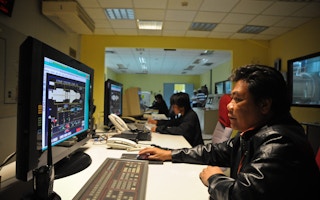International organisations, researchers and data scientists say artificial intelligence (AI) and big data are critical to combat years of promises but inadequate action on the climate, biodiversity and pollution crises.
The United Nations Educational, Scientific and Cultural Organisation (UNESCO), the UN Environment Programme, Microsoft and StartUp inside, a corporation which works with Fortune 500 companies in digital transformation held the virtual ‘AI for the Planet’ conference this week.
As vaccines bring the hope of an end to a brutal pandemic, the partners warn that digital technologies and machine learning can no longer be left out of the conversation on building a more sustainable and equitable planet.
They say the technology can be used to assist the public in embracing more sustainable practices and making better consumption choices.
Postdoctoral Researcher in AI for humanity at the Mila Institute Sasha Luccioni is working on a project that uses AI to visualise the consequences of a changing climate by ‘bringing the future closer.’
It visually projects how houses and streets will look following the impact of climate-related events, hoping that the images will move people into action to protect the planet.
“We are creating a website where someone can enter an address, find their house, school or workplace and we provide them with AI-generated images of what it would look like if climate change had an impact on this location, whether it be through flooding, smog or wildfires,” said Luccioni.
The images are accompanied by information on climate change, extreme weather events, local and global changes, as well as personal and collective action to save the planet and prevent virtual images from becoming reality.
While Luccioni’s project uses AI to impact behaviour change, Weathernews Incorporated of Japan is using the technology in a UNESCO-supported disaster prevention programme.
The chatbot system will be rolled out in East Africa this year. Used by local governments in Japan, it uses AI technology over a messaging app to send information such as river swells to citizens before a disaster and communicate with them during and post-disaster.
The project underscores the need for technology to save lives in an area beset with flooding, landslides, droughts and earthquakes.
“
We would like to contribute to the creation of a society and a planet where many lives can be saved through information, by consolidating our knowledge of disaster prevention, together with AI technology for the planet.
Shoichi Tateno, private public partnership section leader, Weathernews
UNEP officials say the world has 10 years to achieve the Sustainable Development Goals but cannot adequately measure its progress against 68 per cent of their environmental indicators. Executive Director Inger Anderson says AI, big data and technology can help to fill that gap.
“How do we use digital solutions to drive sustainability and to create a world that is circulator, regenerative and inclusive and where we know how we are tracking and measuring where we are falling behind?” asked Anderson, adding that, “UNEP is just beginning to support and scale environmental change through the digital architecture.”
The summit partners say that applying big data, AI and digital technology in areas like mobility, manufacturing, agriculture, energy and buildings can result in a 10 to 20 per cent reduction in global carbon dioxide emissions by 2030.
Watt Time, an environmental non-profit founded by UC Berkley researchers and Silicon Valley software engineers, has been developing technology to reduce carbon dioxide emissions. Executive Director Gavin McCormick says the process starts by using AI to produce high-quality data on greenhouse gas emissions.
“We teamed up with other tech-savvy non-profits including Carbon Tracker and the World Resources Institute to AI to begin continuously monitoring the emissions from every power plant in the world and to make those data available to the general public the way the United States government makes its own data available to the public,” he said.
The virtual summit explored the role of AI in helping nations achieve the goal of limiting the increase in global average temperatures to well below 2°C pre-industrial levels and pursue efforts to limit the temperature increase to 1.5°C.
From providing real-time, reliable data on emissions to focusing on disaster prevention, the partners say AI is a critical yet underused tool in protecting the planet and securing a more sustainable future.
This story was published with permission from IPS.










